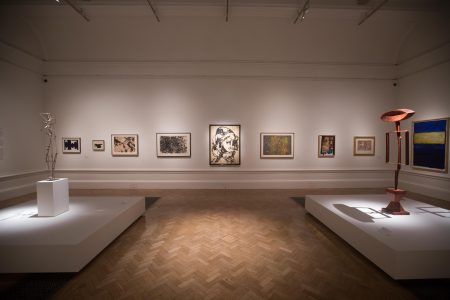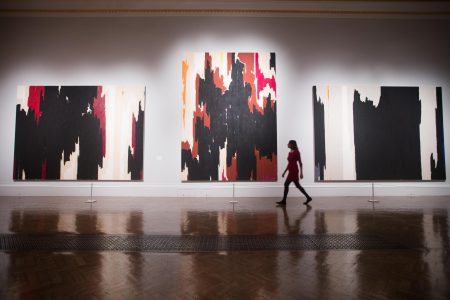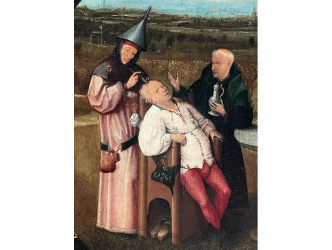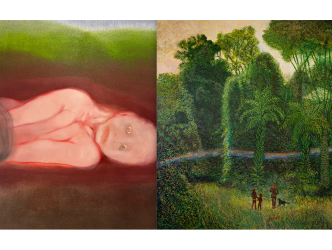‘It is essential for the sensual element to be included in some way or another in any work of art.’
These words were written by Mark Rothko, the most sensual of abstract artists (in his paintings, at any rate).
The sensual dimension is vitally important to art exhibitions like it is to the artwork itself.
The exhibition is that decisive moment that allows you to understand how an artist creates, how he evolves, how his life can influence his work and, above all, whether he is relevant or not (you’re allowed to change your mind from one exhibition to the next) through the twists and turns of art history.
A successful exhibition is not a grouping of famous names, nor is it a performance about the number of works that one has managed to borrow.
It is the combination of the works of art themselves and the coherent hanging that narrates and completes the former through the spatial organisation of its subject.
It is theory put into space.
But there is a world of difference between theory and questions of space.
At the Royal Academy in London, David Anfam, a specialist in Abstract Expressionists and especially in Rothko is co-curator of a huge feat of an exhibition, bringing together a total of 150 works to illustrate its subject. Some groups of works gathered for the occasion like the Clyfford Stills and the Pollocks are exceptional.
Rarely do feel, as you do here, the dance that Pollock conveys in painting.
In the space dedicated to Pollock , you can read the following about the drip paintings (that include the extraordinary six-metre-long ‘Mural’ (1959) which made the journey from Iowa City and the ‘Blue Poles’ (1952) all the way from Canberra): ‘Pollock described these extraordinary traceries as energy and motion made visible, memories arrested in space’.
The exhibition contains 19 works by Jackson Pollock.
In the press release, the curator declares: ‘[the exhibition] brings together some of the most iconic works from around the world in a display that is unlikely to be repeated in our lifetime.’
I’ve rarely heard so much ‘cooing’ from visitors as I did about this exhibition.
It is imagined in such a way that the rooms or sections of rooms are organised chronologically, here by artist, there by style, and at other times in the confrontation of sculpture and painting.
Take for example Franz Kline: if one room titled ‘Violent Mark’ is almost exclusively dedicated to him, he can also be located in Room 1 (Introduction and Early Work) and in Room 9 (Darkness Visible). It is perhaps in relation to this artist that you feel most violently the distinct lack of space.
It’s not that the Royal Academy is small. I remember an Anish Kapoor exhibition here featuring monumental artworks of a different kind. And the ceilings are not exactly low either.
Simply you feel a sort of forgetfulness for the subject at hand: the motion and the space.
American Abstract Expressionist painting has ‘eyes bigger than its stomach’.
Gone are the cramped formats of the Europeans modern masters. In the New World the trees are colossal, the buildings too, the landscapes infinite.
Kline and the others gaze up to the sky and out into space.
The paintings playing tag here are almost the death of this spirit of freedom.
They’ve stopped breathing.
The definitive proof is in the last room, which looks like a waste collection centre for Abstract Expressionism.
Its title is ‘Late Work’ and is introduced in the following fashion: ‘In their final phases, the Abstract Expressionists true to their individualism, gravitated in disparate directions.’
And thus we find a mish-mash of paintings hung with no harmony, from Philip Guston, who dared to return to figurative work in 1970, to Joan Mitchell from 1979, passing through de Kooning from 1975. The paintings insult each other. (And there is no press photos or videos available for this room)
The artists are excellent nonetheless. It’s a pity.
Perhaps the hanging would have benefitted from fewer works.
Perhaps the Spanish version of the show next February in the Guggenheim in Bilbao, a building designed for contemporary art, will be more harmonious.
Until 2 january. www.royalacademy.org.uk.
Support independent news on art.
Your contribution : Make a monthly commitment to support JB Reports or a one off contribution as and when you feel like it. Choose the option that suits you best.
Need to cancel a recurring donation? Please go here.
The donation is considered to be a subscription for a fee set by the donor and for a duration also set by the donor.








